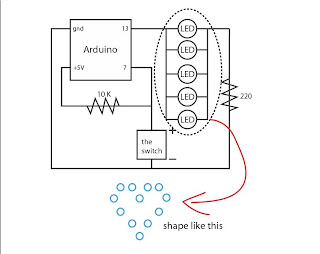CONCEPT
We design this particular piece for police officers. In order for police work
and manage easily when they met the traffic jam or the traffic accidents at
night time.
HOW IT WORKS
The accelerometer reads the date from the participant’s hand by their
speed of the movement, then sends the data to LED lights (output). the
LED lights read the signal from the accelerometer and response with
different speed of blinking.
our final circuit digram:
We develop this project to help the Police officers work better and efficient
at the night time. In addition, we can easily to understand what the Police
officers’ meaning at night ( dark envinonment ) through their body language.
HUMAN INTERACTION
Based on our project, police officer can interact and commuicate with
people easily by using the LED signal through the Arduino. This particular
piece is very easy to use. By daily movement and their special hand
gesture, the speed of the LED lights will according to those hand.
Many many wires
First test:
The base sequence of the LEDs:
The finalized sequence of the LEDs. (airport directing signal sequence)
When the user does not move, the "Z" parameter value below 350, the speed is on the fastest mode.
When the user start moving the arm, the "Z" parameter value above 350 and below 460, the speed is on the normal speed mode.
When the user moves the arm really really fast, the "Z" parameter value above 460, the speed is on the slowest mode.
By using this setting, when the police waving his hand slowly, the light speed is faster, this behavior will save energy from the police. On the opposite side, if the police waves the arm too fast, the driver on the other side of the street will still be able to read the signal because it lights slower.








